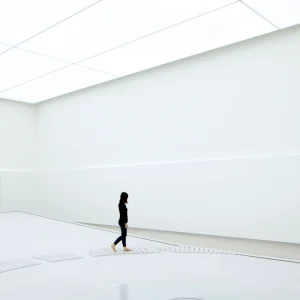Hamburg, June 2008.
The CyberAir 2 series is complete. With the introduction of the upflow versions, the transition to the new generation of STULZ’s CyberAir precision air-conditioning series is now complete. With a diverse range of options, the CyberAir 2 series offers flexible solutions for the air conditioning of large and medium-sized data centres. Precision A/C units are now available with seven different cooling systems. The cooling capacity ranges from 18.6 kW to 197 kW. The units are also available in six sizes, from 1000 mm to 2900 in width with a depth of only 890 mm. STULZ supplies its CyberAir 2 units with a choice of refrigerants: standard types R407C and R410A, or high-temperature refrigerant R134a.
Greater ease of maintenance and planning
Servicing of the CyberAir 2 A/C units is considerably easier than with the predecessor models. All parts requiring maintenance can be accessed from the front of the unit for greater convenience. In addition, in the CyberAir 2 the positions of the connecting pipes and base plate have been standardised to facilitate planning and installation of the units.
Electronic expansion valves for more energy efficiency
In the CyberAir 2 series, STULZ uses electronic expansion valves (EEV) as standard. The EEV is incorporated in the control circuit of the A/C unit, and reacts with targeted precision to fluctuations in temperature and pressure. This increases capacity, and in best-case conditions efficiency is raised by up to 37%.
Optimised energy consumption with Dynamic Free Cooling
With Dynamic Free Cooling, or DFC for short, developed specially for the CyberAir 2, STULZ can boast a unique, energy-efficient solution for the air conditioning of data centres. The electronically controlled hybrid cooling system combines dynamic compressor cooling and free cooling in four stages. DFC automatically selects the best operating mode, depending on the outside temperature and heat load in the data centre. When outside temperatures are low, this can lower electricity consumption by up to 60 %. For units with DFC, STULZ has developed an external pump station in identical design for indoor installation. This brings the advantage of a redundant pump that can supply several A/C units at the same time, yet takes up just 1 metre of floor space. Five pumps with different outputs are available.
Operation made simple with the C7000
To provide improved user friendliness, speed and energy efficiency, STULZ has modified the internal C7000 microprocessor and control terminal. The controller can be configured and operated either using a service laptop or the C7000 Advanced user interface. Use of the C7000 Advanced is improved by optimised navigation. The controller permits up to 20 A/C units to be combined in one bus system. For inter-unit communication, STULZ utilises the high transmission rates and excellent reliability of the RS485 bus system. Use of this internationally popular system ensures compatibility with all common BMS systems both now and in the future.
About STULZ
Founded in 1947, STULZ has evolved into one of the world’s leading suppliers of air-conditioning technology. In 2006 the STULZ Group achieved a turnover of 200 million euros with the production of precision A/C units and chillers, the sale of air-conditioning and humidification systems, the construction of air-handling plants and service and object management. In these areas, STULZ employs a workforce of 1,400 in Germany and around the world in eleven subsidiaries.
The turnover of the STULZ Group for all divisions of the company in total amounted to 600 million euros in 2006. The Group currently has 3,700 employees worldwide. It has production plants in Germany, Italy, the USA, China and India. STULZ co-operates with sales and service partners in another 95 countries around the globe, and can therefore boast an international network of air-conditioning specialists.





